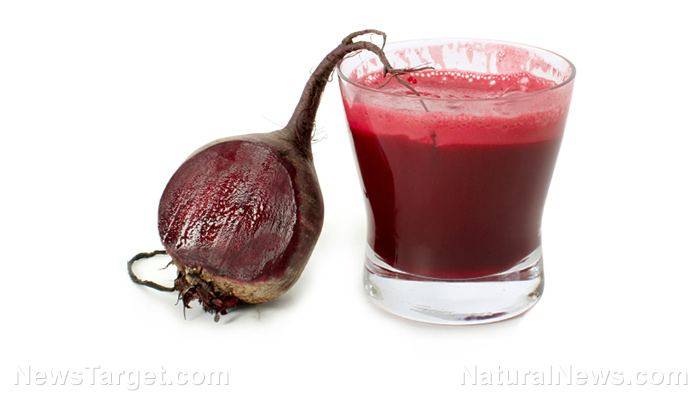Healing herbs: Alternative herbal remedies for hypertension
10/02/2020 / By Virgilio Marin

Researchers from the University of California, Irvine (UCI) and the University of Copenhagen have identified a bioactive trait common among many herbs. This trait, researchers say, is responsible for the antihypertensive properties demonstrated by these herbs.
Their finding, detailed in the Proceedings of the National Academy of Sciences, offers a promising alternative strategy for treating hypertension, a condition in which blood pressure levels stay high over a long period.
The key trait among certain herbs
The Centers for Disease Control and Prevention estimates that about one in three Americans has hypertension. Only one in four patients, however, has the condition under control. Modern medications don’t work for everyone while some people may not be able to afford the sky-high medical costs. Between 2003 and 2014, hypertension cost Americans an average of about $131 billion each year.
For these reasons, researchers are eager to look for innovative ways to address the growing issue of hypertension. Some of them are turned to the herbal remedies that have been used by traditional healers who have been using these methods long before the dawn of modern medicine.
For the study, the researchers selected herbal extracts from a diverse range of plants, including lavender, chamomile, ginger, fennel seed extract, basil, thyme and marjoram. Analysis showed that the herbs used for treating hypertension activate a particular potassium channel, called KCNQ5. This potassium channel is found in the vascular smooth muscles that line the blood vessels.
The researchers discovered that the activation of KCNQ5 helps relax these muscles, lowering blood pressure. This action might explain the antihypertensive properties of certain herbs. In contrast, other plants that previous research has not shown to reduce blood pressure, such as parsley and wheatgrass, do not activate KCNQ5.
“We found KCNQ5 activation to be a unifying molecular mechanism shared by a diverse range of botanical hypotensive folk medicines,” said co-author Geoff Abbott, a professor at the Department of Physiology and Biophysics, School of Medicine at UCI.
Further analysis revealed that aloperine, a chemical compound found naturally in the herbs, is responsible for activating the potassium channel. It works by binding to the foot of the potassium channel.
The team noted some herbs work better than others due to the differing levels of KCNQ5 activity. Among those studied, lavender, fennel seed extract and chamomile appear to be the most effective at activating KCNQ5. (Related: An Ayurvedic approach to hypertension.)
Herbs to lower blood pressure
Here are other herbs that may help lower blood pressure:
- Garlic – This pungent herb helps increase nitric oxide in the body, a known vasodilator that can relax your blood vessels and improve blood flow.
- Cinnamon – Cinnamon extract may lower both sudden-onset and prolonged high blood pressure, according to a rodent study.
- Basil – This herb contains the chemical eugenol, which can block certain substances that tighten the blood vessels.
- Cardamom – Research shows that cardamom powder may enhance the breakdown of blood clots and lower blood pressure.
- Ginger – Animal studies have shown that ginger may improve blood circulation and relax the muscles surrounding the blood vessels.
- Hawthorn – Besides helping reduce blood pressure, hawthorn may also lower cholesterol and prevent the hardening of the arteries.
These herbal remedies offer a promising alternative to prescription medications, benefiting people who do not respond well to current drugs. Anyone looking to try these herbs, however, should consult with their healthcare professional before doing so.
Remedies.news has more on herbal remedies for hypertension.
Sources include:
Submit a correction >>
Tagged Under:
aging, alternative medicine, cardiovascular health, cures, disease treatments, food cures, food is medicine, functional food, heart health, herbal medicine, herbal remedies, Herbs, high blood pressure, hypertension, lower blood pressure, mental health, natural cures, natural health, natural medicine, prevention, remedies, TCM
This article may contain statements that reflect the opinion of the author
RECENT NEWS & ARTICLES
HeartDisease.News is a fact-based public education website published by Heart Disease News Features, LLC.
All content copyright © 2018 by Heart Disease News Features, LLC.
Contact Us with Tips or Corrections
All trademarks, registered trademarks and servicemarks mentioned on this site are the property of their respective owners.



















